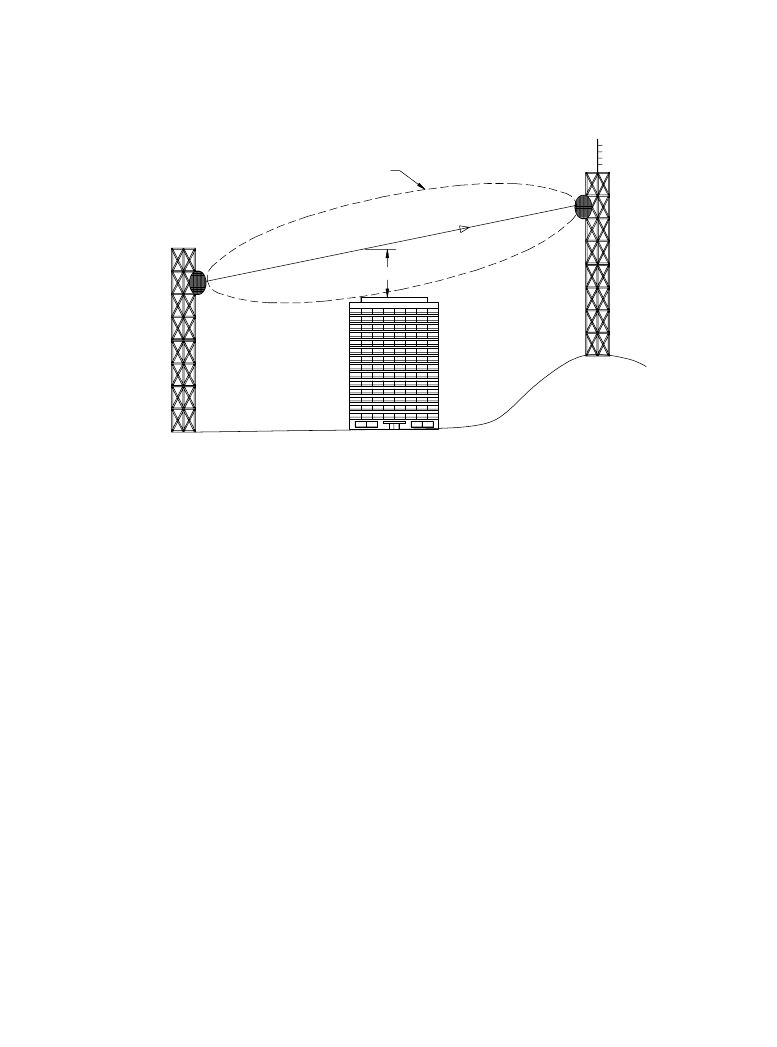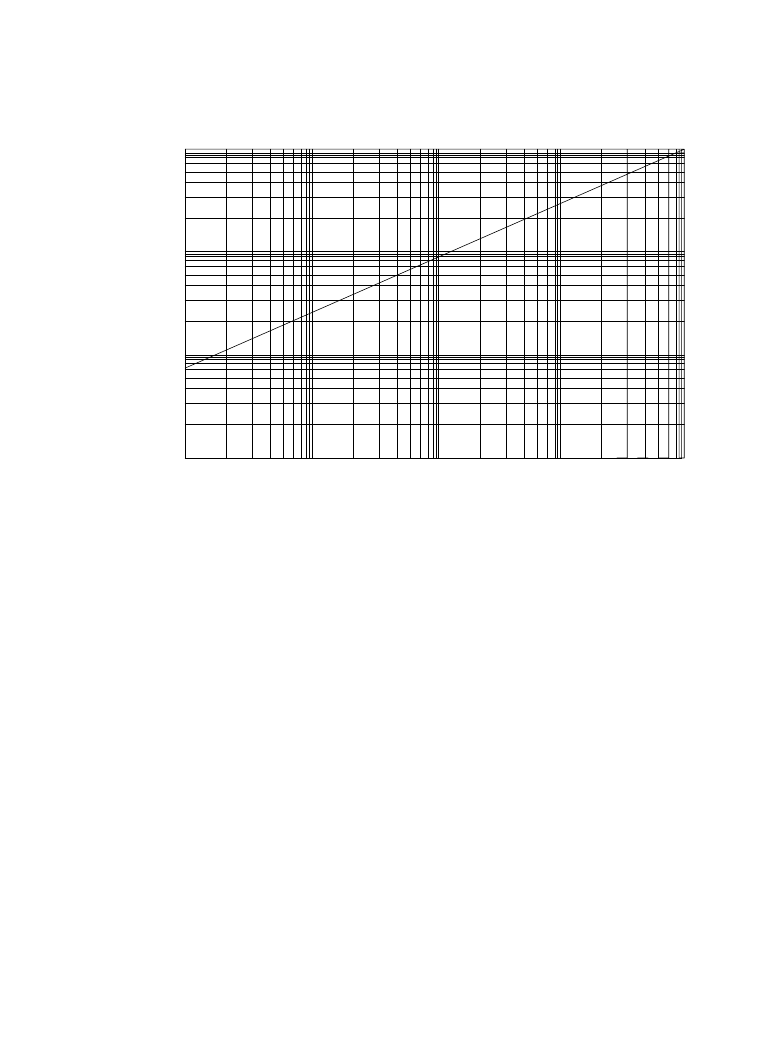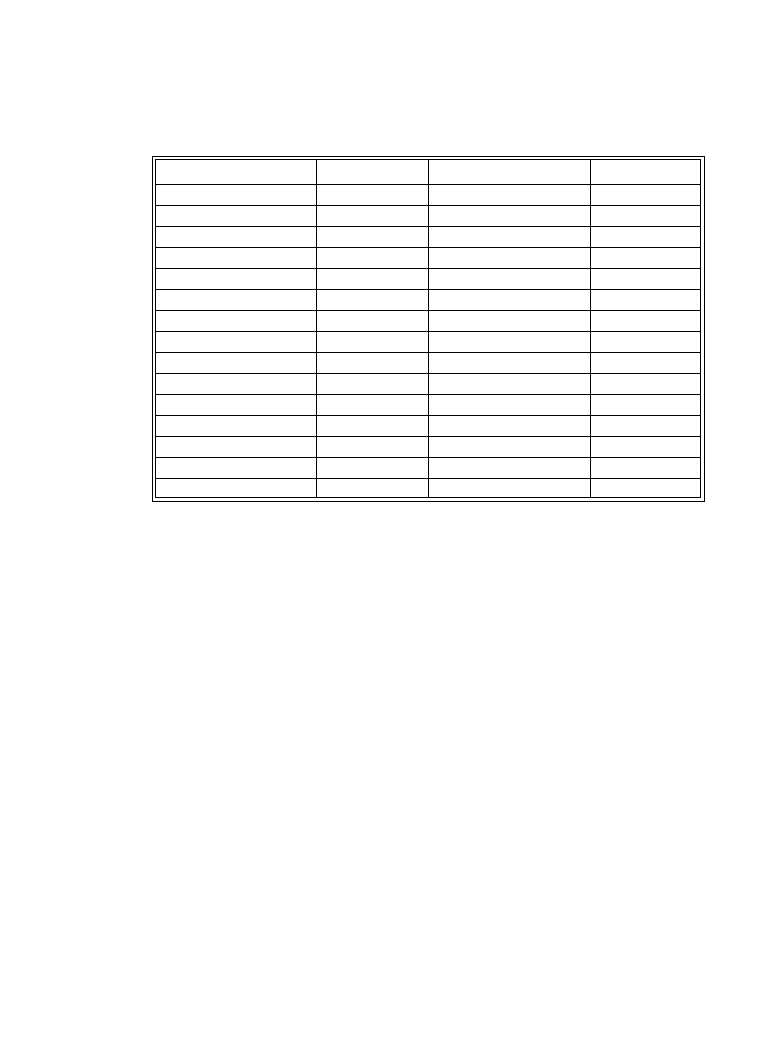ВУЗ: Казахская Национальная Академия Искусств им. Т. Жургенова
Категория: Книга
Дисциплина: Не указана
Добавлен: 03.02.2019
Просмотров: 21659
Скачиваний: 19

Radio STL Systems 11-87
system. The most important factors are free space loss and allowance for fade margin. Thereaf-
ter, effects such has diffraction, reflection, refraction, absorption, scattering, and terrain loss
must be considered.
A gain and loss balance sheet should be computed to determine the fade margin of the
planned STL system. An adequate fade margin is vital to reliable performance because a link
that is operating on the edge of the minimum acceptable receiver quieting will encounter prob-
lems later down the road. Normal component aging in the receiver or transmitter can cause a loss
in received signal level and, thus, degrade system performance. Atmospheric conditions, such as
severe weather in the area or ice on the transmitting or receiving antennas, can also cause sharp
fading and even a complete loss of signal if an adequate fade margin above minimum receiver
quieting is not provided. The STL fade margin can be computed using the following equations:
G
s
= G
t
+ G
ta
+ G
ra
(11.4.3)
Where:
G
s
= total system gain in decibels
G
t
= transmitter power output in dBm
G
ta
= transmit antenna gain in dBi
G
ra
= receive antenna gain in dBi
The values for G
ta
and G
ra
are gathered from the antenna manufacturer's literature.
The value for G
t
is given by the following:
G
t
= 30 + 10 log P
o
(11.4.4)
H
STL
transmitter
STL
receiver
Obstruction
Fresnel zone
Figure 11.4.18
Fresnel zone clearance for an STL path. (
After [2].)
Downloaded from Digital Engineering Library @ McGraw-Hill (www.digitalengineeringlibrary.com)
Copyright © 2004 The McGraw-Hill Companies. All rights reserved.
Any use is subject to the Terms of Use as given at the website.
Radio STL Systems

11-88 Broadcast Transmission Systems
Where:
G
t
= transmitter power output in dBm
P
o
= transmitter power output in watts
The total system losses are then computed:
L
s
= L
p
+ L
l
+ L
c
+ L
m
(11.4.5)
Where:
L
s
= total system losses in decibels
L
p
= path loss in dB
L
l
= transmission line loss in dB
L
c
= connector losses in dB
L
m
= miscellaneous losses in dB
The values for L
t
and L
c
can be determined from manufacturer's literature. Figure 11.4.20
shows typical loss values for 1/2-in foam-filled transmission line. A reasonable value for connec-
tor loss with components normally used in 1/2-in coax installations is 0.5 dB. The value for L
p
can be determined by using the following formula:
L
p
= 36.6 + 20 log F + 20 log D
(11.4.6)
Where:
L
p
= free space attenuation loss between two isotropic radiators (in dB)
F = frequency of operation in megahertz
Receiver
quieting
0 dBm
Transmitter
power
RF l
e
vel (dB
m)
Transmitter
Receiver
Transmission line
Transmission line
RF path
Transmit
antenna
Receive
antenna
Fade margin
Figure 11.4.19
Path analysis plotting gains vs. losses for an STL. (
After [2].)
Downloaded from Digital Engineering Library @ McGraw-Hill (www.digitalengineeringlibrary.com)
Copyright © 2004 The McGraw-Hill Companies. All rights reserved.
Any use is subject to the Terms of Use as given at the website.
Radio STL Systems

Radio STL Systems 11-89
D = distance between the antennas in statute miles
Free space loss can also be found using a table of approximate values, as given in Table
11.4.7.
With the foregoing information, the fade margin can be calculated:
M
f
= G
s
– L
s
– R
m
(11.4.7)
Where:
M
f
= fade margin (in dB)
G
s
= total system gain (dB)
L
s
= total system losses (dB)
R
m
= minimum signal strength required for the target S/N in dBm (a negative number)
G
s
and L
s
are determined by the equations given previously. R
m
(receiver sensitivity) is deter-
mined from the receiver manufacturer's specifications. If the manufacturer gives a receiver sensi-
tivity figure in microvolts, the following formula can be used to convert to dBm:
(11.4.8)
R
m
20
V
r
10
6
–
×
0.7746
------------------------
log
=
0 .0 1
0 .0 5
0 .1
0 .5
1 .0
5 .0
1 0
At
tenuat
ion p
e
r
100 f
t
(d
B)
1 .0
1 0
1 0 0
1 E 3
1 E 4
O p e ra tin g fre q u e n c y (M H z )
Figure 11.4.20
Loss vs. frequency for 1/2-inch foam dielectric transmission line. (
After [2].)
Downloaded from Digital Engineering Library @ McGraw-Hill (www.digitalengineeringlibrary.com)
Copyright © 2004 The McGraw-Hill Companies. All rights reserved.
Any use is subject to the Terms of Use as given at the website.
Radio STL Systems

11-90 Broadcast Transmission Systems
Where:
R
m
= minimum required signal strength (in dBm)
V
r
= receiver sensitivity (in
µV)
In order to predict accurately the performance of the STL radio link, the value of R
m
must be
determined carefully. For maximum system performance and reliability, the fade margin deter-
mination should be made based upon the signal level required to provide the minimum accept-
able receiver S/N performance. Longer paths require greater margins for fade.
The primary cause of signal fade in an STL system below 1.0 GHz is changes in the refractive
indexes of the atmosphere along the signal path. These fluctuations affect the path of reflected or
refracted signals differently from the direct, line-of-sight signal. When the interfering signals
combine with the direct signal, the level at the receiver increases or decreases depending upon
the degree of reinforcement or cancellation. Because atmospheric conditions are seldom stable,
some fade margin is always necessary.
Another cause of signal fade is earth bulge (or inverse beam) fading, where the overall refrac-
tive index in the vicinity of the signal path decreases, thus hindering the full signal from reaching
the receive antenna. Again, allowance for signal fade will minimize degradation. Precipitation is
another potential cause of signal fading, although it is not generally considered significant at fre-
quencies below 1.0 GHz.
Fade margin also can be determined approximately from Table 11.4.8. The relationship
between system reliability and fade margin is detailed in Table 11.4.9.
Table 11.4.7 Path Attenuation at 950 MHz
Distance in Miles
Loss in dB
Distance in Miles
Loss in dB
1
–96.2
16
–120.2
2
–102.2
17
–120.7
3
–105.7
18
–121.3
4
–108.2
19
–121.7
5
–110.1
20
–122.2
6
–111.7
21
–122.6
7
–113.1
22
–123.0
8
–114.2
23
–123.4
9
–115.3
24
–123.8
10
–116.2
25
–124.1
11
–116.9
26
–124.5
12
–117.7
27
–124.8
13
–118.4
28
–125.1
14
–119.1
29
–125.4
15
–119.7
30
–125.7
Downloaded from Digital Engineering Library @ McGraw-Hill (www.digitalengineeringlibrary.com)
Copyright © 2004 The McGraw-Hill Companies. All rights reserved.
Any use is subject to the Terms of Use as given at the website.
Radio STL Systems

Radio STL Systems 11-91
11.4.3c
Dealing with Problem Paths
The STL systems described thus far have been simple installations with a transmitter at the stu-
dio and a receiver at the broadcast transmitter site. There are cases, however, where a simple, sin-
gle-hop STL is not be practical. Reasons include the following:
•
The distance is too great to be reasonably covered by a single-hop system.
•
A direct path cannot be used because of obstructions of some type.
•
An unusually large fade margin is required for the application.
Figure 11.4.21 shows three instances where a two-hop system is required. A two-hop repeater
uses two transmitters and two receivers, with one pair located at the intermediate site. As shown
in Figure 11.4.21c, interference avoidance is another practical application of a multi-hop system.
With a conventional active repeater, the received signal is demodulated down to the baseband
at the intermediate site before being retransmitted. This approach is shown in Figure 11.4.22.
Unfortunately, this method results in inevitable degradation of the signal. A better approach, an
IF repeater, is shown in Figure 11.4.23. Instead of being demodulated to the baseband level, the
received signal is brought down to the IF level before being injected into the repeater transmitter.
Hot-Standby Redundant Systems
The importance of continuous, uninterrupted service from an STL system cannot be overstated.
Modern STL equipment is stable and reliable. Failures rarely occur. However, a station may elect
to install a hot-standby redundant system to ensure zero downtime from the STL. Figure 11.4.24
shows a block diagram of a common hot-standby system. The installation includes a second
transmitter and a second receiver. An automatic changeover unit is included for switching pur-
poses. The changeover system monitors each transmitter and receiver pair to sense critical
parameters. If a failure occurs, the changeover controller switches from the faulty transmitter to
the standby transmitter, or from the faulty receiver to the standby receiver. The changeover units
work independently.
This system can be simplified to include only hot-standby provisions at the transmitter site, or
at the receiver site. If this approach is taken, a case can be made for either backup system. One
argument states that the transmitter is more likely to fail because it contains high-power stages,
which typically are more prone to problems than low-power circuits. On the other hand, the
Table 11.4.8 Recommended Fade Margin as a Function of Path Length
Path Length
Fade Margin
5 mi
5 dB
10 mi
7 dB
15 mi
15 dB
20 mi
22 dB
25 mi
27 dB
30 mi
30 dB
Downloaded from Digital Engineering Library @ McGraw-Hill (www.digitalengineeringlibrary.com)
Copyright © 2004 The McGraw-Hill Companies. All rights reserved.
Any use is subject to the Terms of Use as given at the website.
Radio STL Systems